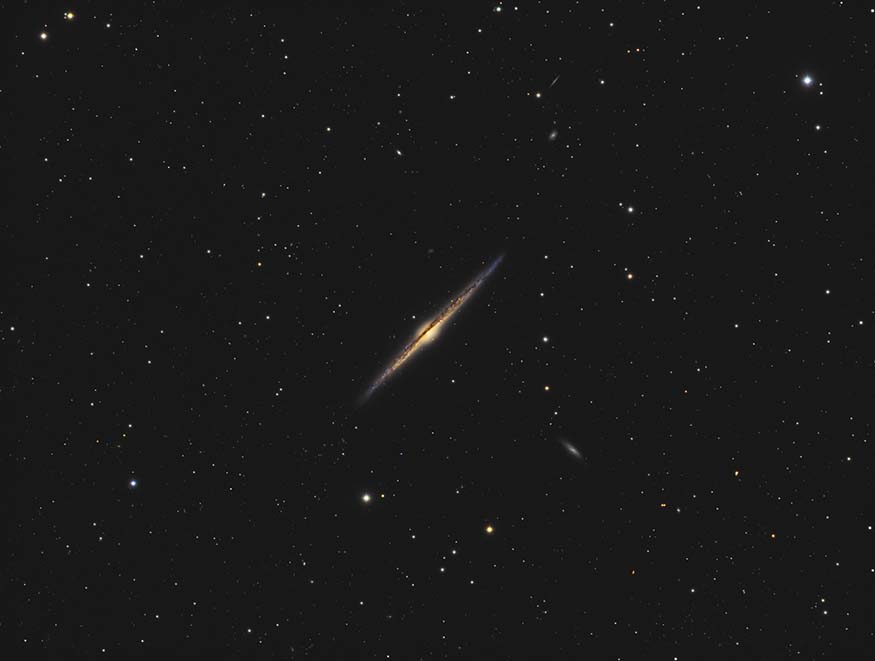
BEAUTY: 
BRAGGING RIGHTS: A beautiful sight
HOW EASY IS IT TO SEE? Telescope required
BEST TIME TO SEE IT: Spring (in Coma Berenices)
TYPE: Galaxy
DISCOVERED: 1785 by William Herschel
Compare photos of NGC 4565 with M51. Would it ever occur to you that both are the same kind of object, just seen from a different perspective? It took many years and hundreds of observations for astronomers to agree that this was the case.
Today we know that spiral galaxies like NGC 4565 and M51 are flattened disks of stars and dust with a bulging central core. Our own Milky Way is like that too. From above it looks like a beautiful spiral. But from the side, it looks just like NGC 4565.
Imagine zooming in to NGC 4565. You’d see the galaxy grow, its faint glow expanding proportionally. Soon it would grow beyond your field of view. You’d have to move your head around to see the whole thing. You’d probably see lots of detail: faint embedded nebulae, and lots of little star clusters. Eventually, the galaxy would get so big that it would arc from one horizon to the other. You’d see a band of light splitting the sky in two. Exactly like the Milky Way.
Not a Messier object. NGC 4565 is one of the few bright galaxies that Charles Messier omitted when he put together his eponymous catalog.
To find it, start at the Coma Star Cluster and move due east a few degrees. Though brighter than some Messier objects, it’s still hard to find in any but the darkest skies. NGC 4565 is probably too faint for binoculars, but even a small telescope will show something interesting.
Central bulge. Start with low power under dark skies to see NGC 4565. The first thing you’ll notice is the central bulge. This is the core of the galaxy and it will appear slightly oval. Can you see the needle-like shapes extending out from the oval? That’s the disk seen edge-on. Use averted vision to extend the size of the galaxy.
Dust lane. Through larger telescopes you might be able to see a thin dark lane of dusk splitting the needle lengthwise. With a smaller scope, try magnifying the central core and see if you can spot the thin band.
COMA BERENICES REGION IN SPRING; 30-DEGREE FIELD OF VIEW